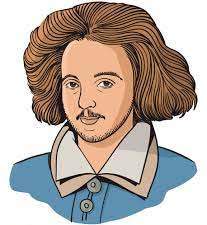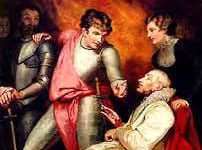Allegory and Symbolism in Doctor Faustus
Allegory and Symbolism in Doctor Faustus
Allegory and Symbolism in Doctor Faustus
‘Allegory’ is an English word originally derived from the Greek word ‘allegoria’ which means something else. Literary, allegory is an art form that signifies a hidden or deeper meaning besides the general or surface meaning. Allegory is always exhibited through a simple story that deals with morality or vice or virtues of society. Alike allegory the word ‘Symbol’ is also derived from the Greek word ‘Sumbolon’ which means a mark or token that stands for the other. The general difference between allegory and symbolism is that allegory is shown through a deductive story, on the other hand ‘symbol’ is shown through a thing or being. Christopher Marlowe though was a great champion of the Renaissance spirit, yet he could not throw away the pre-renaissance ethical theme and allegorical devices in his dramatic works. His great work ‘Dr. Faustus’ is thoroughly allegorical and full of symbols. Both elements are abundantly present in the drama.
The main theme of the story of Dr. Faustus is morality which shows the condemnation of immorality. This moral teaching of the story is brought out through the life of the hero Dr. Faustus who is represented allegorically. Dr. Faustus, the hero of the play by the same name appears at the very beginning of the play as a great scholar in various branches of knowledge, but he becomes ambitious to be a magician through which he desires to be as powerful as God. To meet his aim, he aligns himself with the Devils and defies God or morality. But at last, he goes to eternal sufferance. In his last speech, he utters in fear and agony.
”Ugly hell; grape not! Come not Lucifer!
I’ll burn my books! Ah Mephistophelis!”
This last speech uttered by Dr. Faustus teaches the lesson that an immoral life does not lead one to greatness but to hell which is a source of eternal sufferance. In the finale, the chorus clearly interprets the allegorical meaning of the story delivering the following comment:
”Faustus is gone: regard his hellish fall
Whose fiendful fortune may exhort the wise.”
To bring out the allegorical meaning of the story, the dramatist Marlowe takes shelter on some symbolic characters—some of which symbolize evil, immorality, or vice and some of which stand for morality, good or virtue.
Mephistophilis, Evil Angel, Lucifer, the seven Deadly sins and Helen are the symbols of Evil or Immorality in the play ‘Dr. Faustus’. Let us look into their role in the play as under—
The first salient symbolic character of the play is Mephistophilis who symbolizes evil, immorality and vice throughout the play. He tries his best to mislead Dr. Faustus to the path of vices and eternal damnation. He invokes every possible argument to drive Faustus away from the path of good and morality. Once he tempts Faustus by saying:
”Why Faustus,
Thinkest thou heaven is such a glorious thing?
I tell thee, ‘tis not half so fair as thou
Or any man that breathes on earth.”
The Evil Angel is another symbolic character who stands as a symbol of evil, immorality or vice. When Dr. Faustus falls into a dilemma and seems to turn back to the path of God, then that very moment the Evil Angel appears and incites Dr. Faustus to practice magic which is immoral:
”Go forward, Faustus, in that famous art
Wherein all Nature’s treasure is contained
Be thou on earth as Jove is in the sky.”
Lucifer is another character who stands as the commander of all immorality and vices. It is Lucifer who appoints Mephistophilis to persuade Dr. Faustus to the path of eternal damnation. Even he also persuades Faustus by saying:
Thou shouldst not think of God: think of the Devil.
Fourthly, the Seven Deadly Sins are some abstract ideas that are personified and embodied as human beings who symbolize evil and all sorts of immorality and vice.
The fifth symbol of evil used in the drama is Helen who symbolizes beauty and lust that leads one to the path of sin, despair and damnation.
Besides the above-analyzed characters which symbolize evil, there are some other characters that stand as tokens or symbols of good, virtue, or righteousness. The Good Angel, the old man and the scholars—are the symbols of good. Let us analyze their symbolic significance below:
The most praised character of the play which symbolizes good or righteousness is the Good Angel. He appears in every critical moment of Dr. Faustus and exhorts him to come back to the righteous way of life. He warns Faustus when Faustus turns to magic. He says:
”O, Faustus lay that damned book aside
And gaze not on it, lest it tempt thy soul
Read, read the scriptures—that is blasphemy.”
The second symbol of good and morality is the old man, who like the Good Angel, tries his best to save Faustus’ soul. He says:
”I might prevail.
To guide thy steps unto the way of life.”
The third symbol of good and virtue is Scholars. When they become conscious of Faustus’ immoral acts and irreligious desires then the second scholar repents for Faustus and exhorts him to the path of God:
”Pray thou and we will pray that
God may mercy upon thee.”
The most striking symbol of the play is Dr Faustus, the hero of the play. He himself is the symbol of good and says:
My heart is so hardened I cannot repent
Scarce can I name salvation, faith or heaven.
The above discussion has substantiated that the play ‘Dr. Faustus’ is a fine specimen of allegorical as well as symbolic play in the English language. 0 0 0
Allegory and Symbolism in Doctor Faustus
Read More: Renaissance Elements in Doctor Faustus
Allegory and Symbolism in Doctor Faustus
N. B. This article entitled ‘Allegory and Symbolism in Doctor Faustus’ originally belongs to the book ‘World Drama Criticism‘ by Menonim Menonimus. Allegory and Symbolism in Doctor Faustus, Allegory and Symbolism in Doctor Faustus
Related Searches:
- Use of Allegory and Symbolism in Dr. Faustus
- Discuss Doctor Faustus as an Allegory
- Doctor Faustus as an Allegory
- Renaissance Elements in Doctor Faustus
Books of Literary Criticism by M. Menonimus:
- World Short Story Criticism
- World Poetry Criticism
- World Drama Criticism
- World Novel Criticism
- World Essay Criticism
- Indian English Poetry Criticism
- Indian English Poets and Poetry Chief Features
- Emily Dickinson’s Poetry-A Thematic Study
- Walt Whitman’s Poetry-A Thematic Study
- Critical Essays on English Poetry
- Tawfiq al-Hakim’s Novel: Return of the Spirit-An Analytical Study
- Tawfiq al-Hakim’s Novel: ‘Yawmiyyat Naib Fil Arayaf’-An Analytical Study
- Analytical Studies of Some Arabic Short Stories
- A Brief History of Arabic Literature: Pre-Islamic Period …











